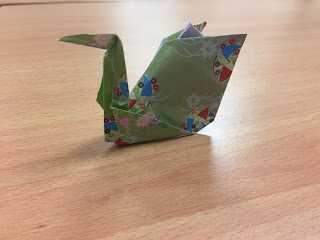23 March 2017
Fifth Class: Lesson 4
Today we will learn about number first. Starting by how to count person. nin- is use to counter a person.
1 Person = Hitori 6 People = Rokunin
2 People = Futari 7 People = Shincinin
3 People = Sanin 8 People = Hachinin
4 People = Yonin 9 People = Kyuunin
5 People = Gonin 10 People = Junnin
Next, numbers
1 = Ichi 6 = Roku
2 = Ni 7 = Nana / Shichi
3 = San 8 = Hachi
4 = Yon 9 = Kyuu
5 = Go 10 = Juu
11= Ju ichi 30 = San ju
12= Ju ni 31 = San ju ichi
20 = Hatachi 40 = Yon ju
21 = ni ju ichi 99 = Kyuu Ju Kyu
22= ni ju ni 100 = Hyaku
101 = Hyaku Ichi 300 = SanByaku
115 = Hyaku ju go 301 = SanByaku Ichi
167= Hyaku Roku juu Nana 323 = SanByaku Ni juu san
200 = Ni Hyaku 400 = Yonkyaku
201= Ni Hyaku Ichi 600 = Roppyaku
223 = Ni Hyaku Ichi juu San 800 = Happyaku
900 = Kyuhyaku 1000 = Sen
10 000 = Ichiman
100 000 = Juman
1 000 000 = Hyakuman
10 000 000 = Sen man
In Japanese phone number and room number in Hotel, they will pronounce it one by one for example
Room 225 = Ni Ni Go not Ni Hyaku Ni jun Go
Phone number = 012 6731820
Zero Ichi Ni Roku Nana San Ichi Hachi Ni Zero
Then, we learn about family
Family = Kazoku かぞく
Otto おっと= Husband
Tsuma つま=Wife
Otouto おとうと = Younger Brother
Imouto いもうと= Younger Sister
Watashi no Natasha Kazoku wa Nana nin desu
わたしゅ の ナタシャ かぞくわ 7にんです。
Natasha has 7 family members
Kono Hita Wa Dare Desuka ?
このひたわだれですか ?
Who are you ?
Oi Kutsu desuka ?
おいくつですか ?
How old are you






